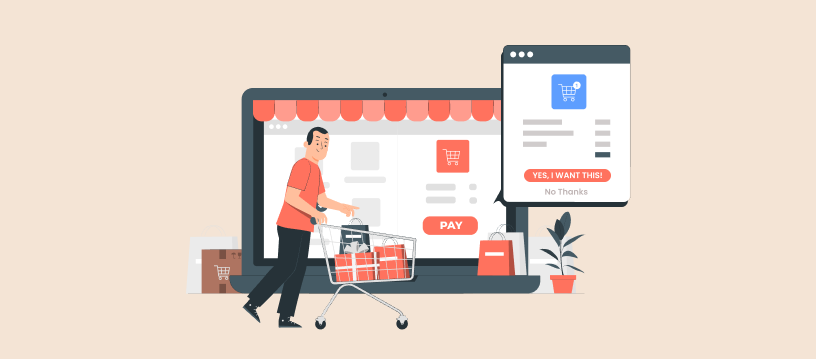Want to make more sales and improve profitability in your WooCommerce store? Then, Dynamic pricing is one such discount strategy you can try. Dynamic pricing, as the name suggests, is about providing different prices for the same product.
The importance of dynamic pricing lies in the fact that you can change your product’s prices based on market fluctuations, customer demand, product availability, inventory levels, festive seasons, competition, etc.
Dynamic pricing is not just used in WooCommerce stores but also in a wide range of industries. Some of these industries include hotels & restaurants, Airlines, Hospitality, eCommerce, Raidsharing, and even in the retail industry.
In this article, you can find a few successful dynamic pricing examples that helped them increase their customer base and maximize profits. In addition to that, you’ll get to know how to use dynamic pricing effectively in your WooCommerce store.
Save time by automating product price adjustments in WooCommerce with the dynamic pricing feature of the Discount Rules plugin.
How does Dynamic Pricing Work?
Dynamic pricing, in its literal meaning implies pricing that changes based on a specific scenario. Imagine you own an eCommerce store and have customers from different regions. Let’s say, you have to send a specific product to two different customers from different places A and B. Place A is closer to your warehouse, while place B is a bit farther away, incurring additional shipping charges.
And, here’s where dynamic pricing can be put to use. If you’ve set dynamic pricing for those respective places beforehand, it will automatically display the different prices you’ve set for each place making it easy for you as well as your customers.
With “Discount Rules for WooCommerce – PRO”, you can not just only change prices based on location, you can do it for different factors such as customer’s purchase history, currency used, specific products and categories, etc.
Successful Dynamic Pricing Examples Across Industries
As mentioned earlier, dynamic pricing strategy is not just limited to eCommerce or WooCommerce shops but is followed in a wide range of industries.
If you are a WooCommerce store owner or own any other eCommerce site, you can simply emulate the dynamic pricing examples that are detailed below. Most of these are real-world dynamic pricing examples that brought huge success for these brands.
Amazon’s Dynamic Pricing Examples
Amazon is one of the classic examples of Dynamic Pricing in the e-commerce industry where it adjusts product prices based on factors such as competitor pricing, demand & supply, customer behavior, time of the day, etc.
Here’s how Amazon uses dynamic pricing for any of its popular products based on different situations.
- Competitor Pricing: Amazon would constantly track the prices of the product on other similar eCommerce websites and change its price accordingly. If the competitors lower their prices, Amazon will lower their prices even more to remain competitive.
- Demand & Supply: If the demand for a particular product is high, Amazon tries to capitalize on that by raising prices and taking maximum profit out of it. One can observe that prices may rise during Black Friday eCommerce sales. Conversely, during low-demand periods, Amazon might reduce prices to clear inventory.
- Customer Behavior: If a customer adds a product to their carts but leaves without purchasing it, Amazon may lower the price to encourage sales or offer additional promotions like free shipping, etc.
In addition to the above dynamic pricing examples, one can also see Amazon based on time, quantity discounts, etc.
Uber’s Dynamic Pricing Examples
The dynamic pricing models of Uber help balance the rider’s demands with available supply, ensuring both drivers are compensated and passengers can still get a ride when needed.
These dynamic pricing examples are more focused on capitalizing on special events or scenarios where more people want rides. Some of the dynamic pricing strategies they do are listed below.
- Weather Conditions: If there’s heavy rain or any other weather conditions where people are more likely to take a cab, Uber will raise the prices and make profits out of it. Unfair though, but driving in the rain is no less of a task.
- Time of the Day: Mornings and Evenings are considered peak hours for services like Uber and they’ll will get a lot of bookings during this time. At these times, Uber follows demand based pricing and increases prices. On the contrary, ride fares will be low during non-peak hours.
- Customer Behavior: Dynamic pricing is not just about increasing the prices to their will. It also reduces prices for selective customers. When customers consistently take their services during peak hours, Uber discounts them or offers incentives to encourage travel.
These types of dynamic pricing examples help Uber maintain their profitability as well as offer good services in return.
Airbnb
At this point, you are well aware that Demand, Supply, and Time are key factors of dynamic pricing. But, there are a few other factors that Airbnb utilizes to set dynamic pricing for their customers. Such dynamic pricing examples are given below.
- Location: Properties that are closer to city centers or tourist places attract higher prices than those that are quite far away. The reason is comfort and people tend to book properties that offer convenience.
- Guest Behaviour: Properties with a good user rating and review get higher fares from Airbnb while lower-rated properties are listed at a cheaper price. Airbnb uses customer ratings to help determine a host’s popularity and adjusts pricing based on the perceived value.
- Length of Time Since Last Booking: If a property hasn’t been booked for a long time, Airbnb reduces its price to see if it attracts customers. This dynamic pricing example increases the likelihood of bookings and fills vacancies more quickly.
In addition to the above dynamic pricing examples, Airbnb dynamically changes prices during important seasons, length of stay, etc.
ASOS’ Dynamic Pricing Model
ASOS is a global clothing brand that uses a dynamic pricing strategy effectively to maximize its profits or at the least, clear its inventory. If you own an online store in WooCommerce or any other e-commerce site, you can draw a lot of parallels from the below dynamic pricing examples.
- Inventory Levels: When ASOS has a lot of unsold items in its inventory for a longer period, it reduces its prices and tries to clear them quickly.
- Geographical Location: Since ASOS is a global brand and has customers from all over the world, it dynamically changes product prices based on customer location taking into account local market conditions and shipping costs.
- Customer Behaviour: ASOS keeps track of customers who view particular products frequently but are not purchasing them. In such cases, ASOS offers targeted discounts to them and makes them purchase the product.
ASOS also utilizes sales events like Black Friday, Cyber Monday, etc to offer dynamic pricing to their products.
Target customers from specific regions and maximize customer base using the Discount Rules for WooCommerce – PRO plugin.
Walmart’s Dynamic Pricing Example
Here are some dynamic pricing examples that Walmart uses to attract customers. Walmart is a retail corporation that sells goods online as well as in stores. Some of the unique dynamic pricing strategies they follow are given below.
- Online vs In-store pricing: Walmart dynamically changes prices between online and physical stores based on local competition, inventory, or regional demand.
- Inventory Levels: If certain items are high in demand but low in supply, Walmart may increase or decrease its prices to balance the demand-supply dynamic.
- Competitor Pricing: Just like Amazon or any other e-commerce company, Walmart too changes its prices based on its competitors. They even analyze local competition and change their product prices.
In addition to the above dynamic pricing examples, Walmart also considers time of the day, weather & external factors while fixing product prices.
Starbucks
Starbucks is a chain of coffee houses known for using dynamic pricing to maximize profit whilst keeping their customer base intact. Here is the dynamic pricing example they use.
- Customer Loyalty: Starbucks has a loyalty program where it keeps track of all the previous purchases made by its customers and rewards them accordingly. Regular customers are rewarded with points which they can encash and get discounts which indirectly creates a dynamic pricing model.
Above are some of the best dynamic pricing examples for eCommerce that you can follow, implement in your eCommerce stores, and maximize profits.
How to Use Dynamic Pricing Effectively in WooCommerce
Here comes the big picture, WooCommerce. According to McKinsey’s recent study, dynamic pricing in WooCommerce stores can increase sales by 2-5% and profit margins by 5-10%. This is a clear indicator that any WooCommerce store owner should try this discount strategy and maximize their profits. Here’s a list of WooCommerce store types that can benefit from dynamic pricing:
- WooCommerce stores with multiple products
- Wholesale WooCommerce stores
- Subscription-based WooCommerce stores
- WooCommerce stores selling seasonal products
- WooCommerce stores that sell high-volume or competitive products
If your WooCommerce store falls into any of the above categories, you can readily use dynamic pricing to maximize profit.
To do this, you must have a plugin like “Discount Rules for WooCommerce – PRO” with which you can set various discount conditions that change based on customer characteristics. Some of the dynamic pricing techniques and dynamic pricing strategies you can use with Discount Rules in your WooCommerce store are given below.
- WooCommerce Bulk Discounts: This dynamic pricing algorithm involves selling products in bulk, you can provide huge discounts for customers who buy large quantities of products over small quantities. This encourages customers to purchase more and increases the average order value.
- WooCommerce User Role Discounts: As a WooCommerce store owner, you may come across different types of customers. Some customers buy in bulk while others purchase regularly. You can identify and segment these customers and offer discounts of specific value to them.
- WooCommerce Time-Based Discounts: Time-based discounts are dynamic pricing examples where you sell a particular product at a lesser price for a shorter duration of time. It is also called a flash sale or limited-time offer.
For a better understanding, you can show dynamic discounts in WooCommerce using WooCommerce tiered pricing table.
Benefits of Dynamic Pricing in eCommerce
Here are some convincing reasons why you should follow dynamic pricing in your WooCommerce or any other eCommerce stores.
- Price Optimization: Price elasticity based on demand and market conditions without affecting your profit margins. If a product is less in demand, you can provide bulk discounts for those who purchase in higher volume and vice versa. Here are some of the best WooCommerce Bulk Plugins to increase sales.
- Improved Sales Volume: Sales volume can be easily increased and there are several dynamic pricing examples that you can follow to do so. You can either offer bundle or bulk discounts to products which in turn increases sales and revenue.
- Competitive Edge: Gain an advantage in your market by quickly changing prices based on your competitors’ pricing. You can lower or increase your price as you wish.
- Customer Personalization: Set role based pricing for different use roles and show prices based on that. You can segment your customers into wholesale customers, subscribers, VIP customers, First-time customers, etc, and provide personalized pricing.
Offer persanalized pricing to your customers based on their purchase history using Discount Rules for WooCommerce – PRO.
Conclusion
By now, you would have known different dynamic pricing examples that several organizations worldwide followed to maximize their profits. It doesn’t matter if you are a small or large eCommerce store owner, you can definitely use dynamic pricing to display prices that change according to customers, products, and many other factors.
With the right dynamic pricing plugin like “Discount Rules for WooCommerce”, you can create a pricing system that displays different prices for different customers or multiple prices per product. Doing so will help in customer segmentation, gain a competitive advantage in your eCommerce niche, and maximize your overall revenue.
Frequently Asked Question
WooCommerce Dynamic pricing involves setting up prices that change based on customer role, purchase quantity, customer location, etc. With the help of dynamic pricing plugins for WooCommerce such as “Discount Rules”, you can easily implement variable pricing.
Dynamic ticket pricing involves adjusting ticket prices in real-time based on demand, timing, etc. Common dynamic pricing methods include price optimization algorithms, competitor tracking and surge pricing during peak timings.
Dynamic pricing in methods in eCommerce or anywhere are legal as long as it complies with local regulations. Dynamic pricing models must avoid price discrimination or unfair practices.





